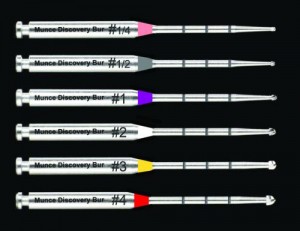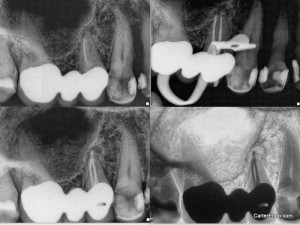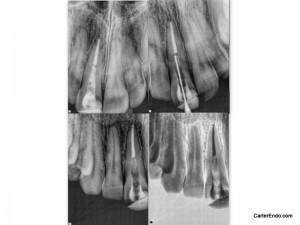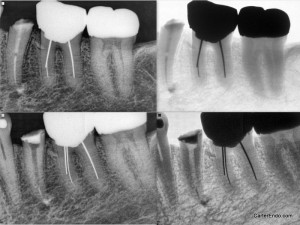Fiber posts came into vogue in the last decade. There are a whole host of reasons why people like them and use them in many different types of teeth. Despite the fact that they present some unique challenges in terms of removal, I support and encourage their use when appropriate.
Fiber post removal is a part of what we do on a regular basis. While every tooth is different, many parts of the process are remarkably consistent. The first thing I try to do is make sure I review the preoperative radiographs carefully. These posts are often difficult to identify on radiographs as there are wide varieties available to the practicing clinician. In addition, there are many ways that they can be placed. The nice thing about identifying the fiber post preoperatively is that you are initiating treatment with a game plan in mind. Also, you are able to prepare the patients for what can be additional treatment time.
Once treatment is initiated, one of the concepts I like to use is the concept of progressive hydration. This idea is not exclusive to fiber post removal, but can be applied to many different clinical situations. It is one of the most effective ways to determine where you are in the tooth when confronted with different layers of tooth and similarly colored restorative materials. This is a higher order concept, and one that definitely requires the use of the dental operating microscope. Once the field is flooded with light and you are looking inside a tooth, you want to identify different materials. This may be restorative materials, it may be types of dentin, or something else. But often, when the tooth is dry, the various materials appear similar. Once moisture is added, this often changes, but sometimes does not. Using cotton pellets, paper points, or air, I like to reduce the moisture content slowly. As this process occurs, the different materials lose water at different rates. This allows you to differentiate between layers that earlier appeared uniform. Usually a fiber post appears as a white circle, in a composite matrix.
Once the post is identififed, I like to use a Munce bur.
This is a long shank troughing bur created by a California Endodontist, Dr. C. John Munce. John is a wonderful clinician and innovator. I really believe that you have to make this bur a part of your armamentarium and they are available here. I like to use these burs to drill directly down through the fiber post. I have found that the narrow shank helps visibility, while the stiffness allows me to establish and hold a line I can visualize as I move apically. After reaching gutta percha, I usually will use a Gates Glidden #2. This will then shred and remove remaining fragments of the fiber post.
Here are some cases that were treated that involved fiber post removal:
Fiber post removal is a complex procedure. With some experience and a plan, they can be managed predictably.
Think Spring! Or even better, Think Summer!!!




